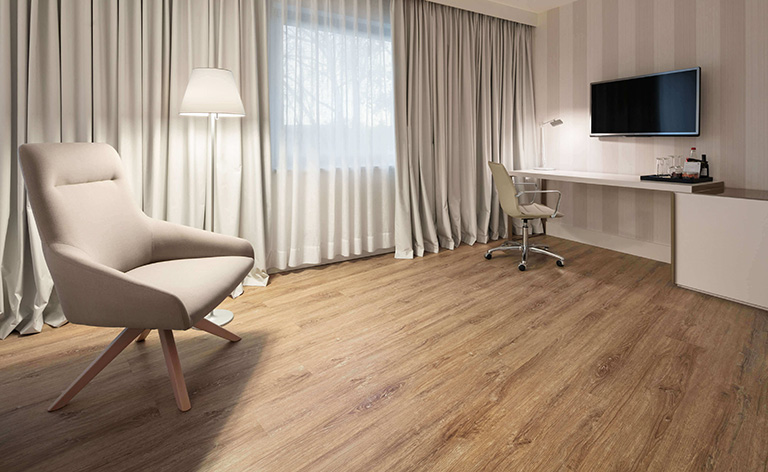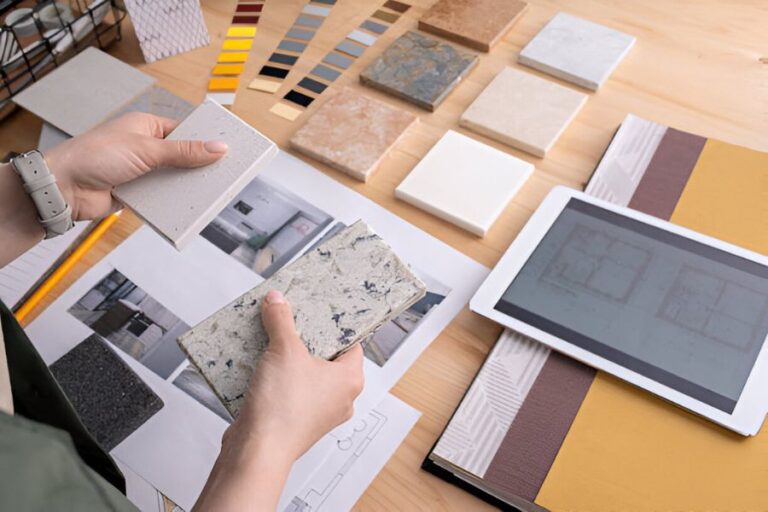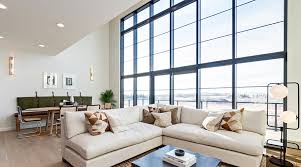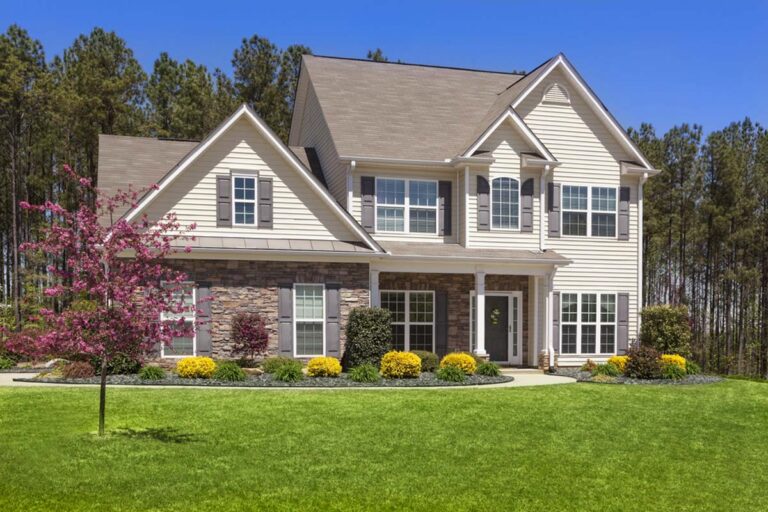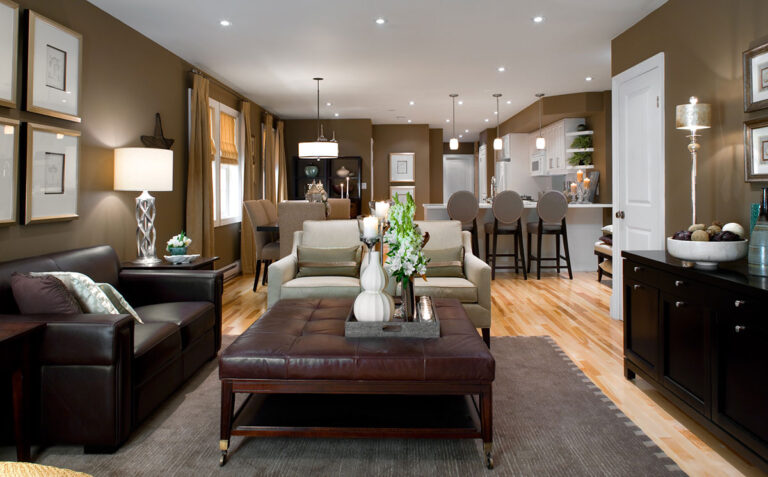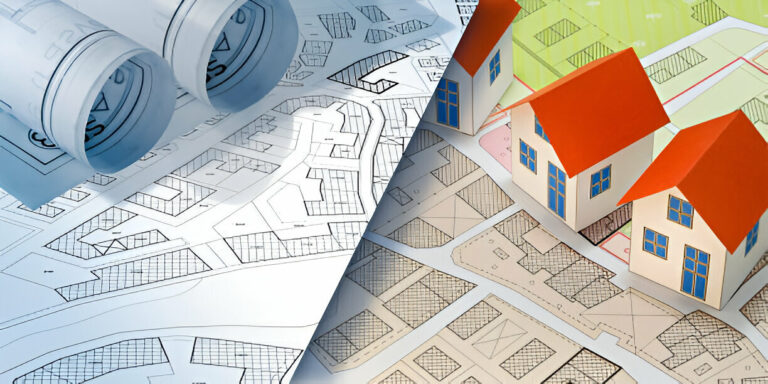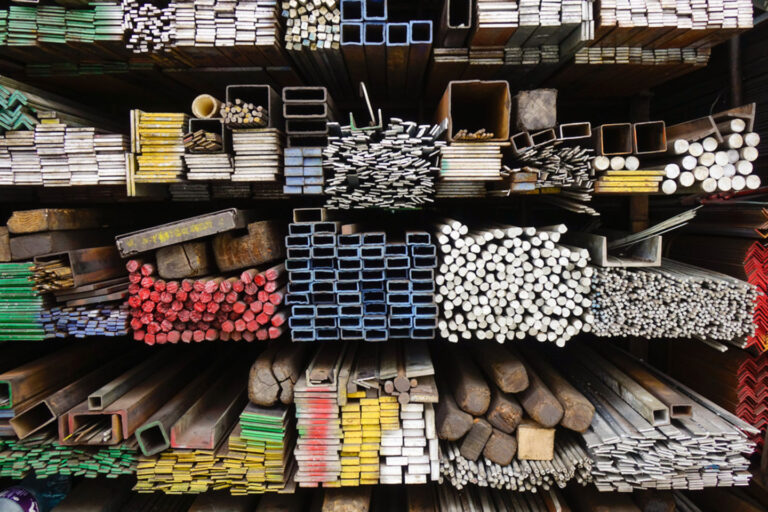Sustainable Materials for Custom Homes: Balancing Eco-Friendliness and Aesthetics
When building your custom home, you can embrace both sustainability and aesthetics with materials like reclaimed wood and bamboo, which blend durability and minimal environmental impact. Options like cork flooring and metal roofing offer longevity and style, while innovations in non-toxic paints and energy-efficient windows enhance indoor air quality and reduce energy consumption. Equally, incorporating green roofs and recycled glass contributes to a stylish, eco-friendly living space. Opt for these materials to guarantee your home is not only beautiful but also a bastion of environmental responsibility. More insights are available to help you make the best choices for a sustainable future.
Reclaimed Wood Features
Reclaimed wood isn’t just a stylish choice; it’s a reflection of both your aesthetic sensibility and your commitment to environmental sustainability. When you choose reclaimed wood for your custom home, you’re not only embracing a unique and timeless look but also guaranteeing that your environmental footprint is minimized. This material repurposes existing wood from old structures, thereby reducing deforestation and waste.
Opting for reclaimed wood also guarantees safety in your living environment. This wood often comes from old-growth trees, which are typically denser and more durable than the wood harvested today. Its provenance and age contribute to its stability and less susceptibility to warping or splitting, making it a reliable choice for your home.
Moreover, using reclaimed wood can enhance indoor air quality. Unlike some new wood products, reclaimed wood is less likely to off-gas volatile organic compounds (VOCs), chemicals that can have adverse health effects. By selecting reclaimed wood, you’re opting for a material that is not only safe but also superior in quality and character.
Incorporating reclaimed wood into your home isn’t just a design decision—it’s a health-conscious, sustainable choice that adds unparalleled beauty and a story to every space.
Benefits of Bamboo
Bamboo serves as a highly sustainable alternative for custom home building, offering remarkable benefits that extend beyond its rapid regrowth. It’s not just fast-growing; it’s also robust and versatile, making it an ideal choice for your safe, eco-friendly home.
When you choose bamboo, you’re opting for a material that’s inherently strong and durable. Its tensile strength can rival steel, and it withstands compression better than many concretes. This means your home will be sturdy and capable of enduring various weather conditions. Bamboo’s natural flexibility also enhances its earthquake resistance, providing you with extra safety in seismically active areas.
Furthermore, bamboo is a champion of environmental sustainability. It absorbs carbon dioxide at higher rates than many trees, purifying the air you breathe. It also requires minimal water and no harmful pesticides, preserving surrounding ecosystems and water quality.
Here’s a quick look at why bamboo stands out:
| Feature | Benefit |
|---|---|
| Rapid Growth | Sustains resource |
| High Strength | Guarantees safety |
| Flexibility | Increases resilience |
| Low Water Need | Conserves resources |
| Pesticide-Free | Protects health |
Embrace bamboo for its balance of safety, strength, and sustainability, making it a top choice for your custom home.
Recycled Glass Usage
Turning to recycled glass as a building material offers you a unique opportunity to further enhance the environmental friendliness of your custom home. Recycled glass, sourced from post-consumer or post-industrial waste, provides a sustainable alternative that reduces landfill waste and the energy used in new glass production. You’re not only making a choice that’s good for the planet but also for the safety and durability of your home.
Recycled glass surfaces are incredibly resilient and easy to maintain. They resist stains, scratches, and bacteria growth, ensuring your home remains safe and hygienic. Additionally, the non-porous nature of glass makes it a safe choice for areas like kitchens and bathrooms where moisture is prevalent.
Incorporating recycled glass into your home doesn’t mean sacrificing style. Available in a variety of colors and finishes, it can be used for countertops, flooring tiles, and decorative features, providing a unique aesthetic appeal that can’t be matched. You’ll find that recycled glass can seamlessly integrate with any design style, from modern minimalism to rustic charm, making it a versatile choice for your sustainable living space.
Innovations in Cork Flooring
While recycled glass offers a distinct blend of durability and style for various applications within the home, cork flooring emerges as another innovative material in the domain of sustainable building. You’ll find that cork not only enhances the aesthetic appeal of your space but also brings remarkable safety and comfort benefits.
Cork is harvested from the renewable bark of cork oak trees, which means it’s an eco-friendly choice that doesn’t harm the environment. This material is naturally fire-resistant, providing an extra layer of safety for your home. Its soft texture reduces the risk of injuries from falls, making it ideal if you have kids or elderly family members.
Moreover, cork flooring is incredibly durable and easy to maintain. It has a unique cellular structure that makes it resilient against pressure and shock. This means fewer worries about heavy furniture or high foot traffic damaging your floors.
Here’s a quick glance at what cork flooring offers:
| Feature | Benefit | Safety Aspect |
|---|---|---|
| Renewable | Eco-friendly | Sustainable source |
| Fire-resistant | Low fire risk | Enhances home safety |
| Soft texture | Comfortable, reduces injury risk | Safer for falls |
Choosing cork flooring means you’re opting for a safe, sustainable, and stylish foundation for your home.
Low-Impact Concrete Explained
As you explore sustainable building materials, consider the benefits of low-impact concrete, a revolutionary choice that greatly reduces environmental footprint. This material isn’t just about keeping your home safe; it’s also about safeguarding our planet. Low-impact concrete uses less cement and incorporates recycled materials like fly ash or slag, markedly cutting down CO2 emissions compared to traditional concrete.
You’ll find that this alternative doesn’t compromise on safety or durability. It meets all standard building codes and often surpasses traditional concrete in resistance to weather and wear. This means you’re not only making an environmentally sound choice but also investing in a solution that stands the test of time.
Furthermore, low-impact concrete offers excellent fire resistance, an essential feature for any homeowner. It can withstand extreme temperatures, providing an additional layer of security for your home. This material also contributes to better air quality inside your house by minimizing the release of volatile organic compounds (VOCs).
Eco-Friendly Insulation Options
After exploring the innovative world of low-impact concrete, let’s shift our focus to another essential aspect of sustainable home building: eco-friendly insulation options. You’ve likely heard that traditional insulation can contain harmful chemicals and isn’t always the best for the environment. It’s time to contemplate alternatives that guarantee your home remains a safe sanctuary without compromising on performance.
First, think about sheep’s wool insulation. It’s natural, renewable, and has excellent thermal properties. Plus, it regulates humidity and can help improve indoor air quality by absorbing toxins. You’re not only insulating your home but also protecting your health and the planet.
Another stellar option is recycled cotton batts, made from denim fabric scraps. This material is treated to be fire-resistant and doesn’t contain harmful irritants or chemicals. It’s an effective way to reuse materials that would otherwise end up in landfills.
Lastly, reflect on cellulose insulation, which is composed of recycled paper products. It’s treated with non-toxic borate compounds to resist pests and fire. This option offers superior soundproofing and is known for its low thermal conductivity.
Sustainable Roofing Materials
Shifting our focus upward, consider the range of sustainable roofing materials available for your custom home. You’ve got options that not only promise longevity but also reflect your commitment to the environment.
Metal roofing, for instance, is a stellar choice. It’s durable, fire-resistant, and made largely from recycled materials. Beyond its practical benefits, metal roofing can be finished in a variety of colors and styles to suit your aesthetic needs. It’s also energy-efficient, keeping your home cooler by reflecting solar radiant heat, which can help you save on cooling costs.
Another eco-friendly option is slate. This natural stone has a lifespan that often exceeds 100 years, making it incredibly sustainable. Slate is also fireproof and offers a classic, elegant appearance that can elevate the look of your home.
For those interested in green innovations, consider green roofs. These living roofs are covered with vegetation that can reduce runoff, improve insulation, and enhance air quality. They require more structural support but offer significant environmental benefits and a unique visual appeal.
Choosing the right roofing material isn’t just about aesthetics; it’s about ensuring safety, durability, and environmental responsibility. Let’s make a choice that you’ll be proud of for decades to come.
Energy-Efficient Windows
Moving from the top of your house to the elements that fill its openings, energy-efficient windows are vital for any custom home seeking sustainability. These windows not only enhance the aesthetics of your home but also play a key role in reducing energy consumption. You’ll find that by investing in high-quality, energy-efficient windows, you’re not just saving on heating and cooling costs; you’re also increasing your home’s safety and comfort.
Energy-efficient windows come with multiple layers of glass and improved framing materials that offer better insulation than traditional windows. This means less strain on your heating and cooling systems, guaranteeing they last longer and work more efficiently. Additionally, the tight seals of these windows keep out drafts and moisture, preventing mold growth and reducing allergens in your home.
Moreover, these windows can greatly diminish the amount of ultraviolet and infrared light that enters your home, protecting your furniture and flooring from sun damage. This feature, coupled with their ability to maintain a consistent indoor temperature, guarantees that your living space is not only safe but also comfortable year-round.
Choosing energy-efficient windows is a smart, responsible step towards a sustainable, secure home environment. Don’t overlook this vital element in your quest for a greener home.
Non-Toxic Paints and Finishes
As you consider the elements that contribute to a healthy, sustainable home, don’t overlook the importance of non-toxic paints and finishes. These products are essential for maintaining indoor air quality and ensuring that your living space remains safe and free from harmful chemicals. Traditional paints often emit volatile organic compounds (VOCs), which can cause health issues such as headaches, dizziness, and respiratory problems. By choosing non-toxic alternatives, you’re not only protecting your health but also contributing to a more sustainable environment.
Here’s a quick guide to help you understand the benefits and types of non-toxic finishes available:
| Type | Benefits | Common Uses |
|---|---|---|
| Zero-VOC Paint | No harmful emissions, low odor | Walls, ceilings |
| Natural Oil | Biodegradable, enhances wood grain | Furniture, floors |
| Mineral Paint | Durable, mold-resistant | Exterior walls |
| Plant-based | Renewable resources, low VOC | Interior decor, toys |
When you’re selecting paints and finishes, it’s important to verify the product labels and opt for those with certifications like Green Seal or EcoLogo. These products meet stringent environmental standards and are less likely to cause health problems. Remember, a little extra effort in choosing the right materials can make a significant difference in your home’s safety and sustainability. Choose wisely for a healthier home and planet.
Green Landscaping Solutions
Shifting from the indoors to your home’s exterior, consider implementing green landscaping solutions to further enhance your property’s sustainability. By choosing native plants for your garden, you’re not only supporting local wildlife but also reducing the need for water, pesticides, and fertilizers. These plants are naturally adapted to your climate, making them more resilient and less maintenance-intensive.
Incorporating permeable paving into your design can greatly improve water management. This innovative solution allows rainwater to filter through the ground, replenishing local aquifers and preventing problematic runoff. It’s a safe, effective way to manage excess water while maintaining a stunning aesthetic.
Consider the benefits of a rain garden. Positioned strategically, these gardens collect runoff from roofs, driveways, and other surfaces, filtering pollutants and improving water quality. It’s a proactive step towards a healthier ecosystem right in your backyard.
Lastly, opt for solar-powered outdoor lighting. It’s safe, reduces your carbon footprint, and cuts down on your energy bills. Each of these strategies not only contributes to a more sustainable environment but also guarantees a safer, more beautiful space for you and your family to thrive.

